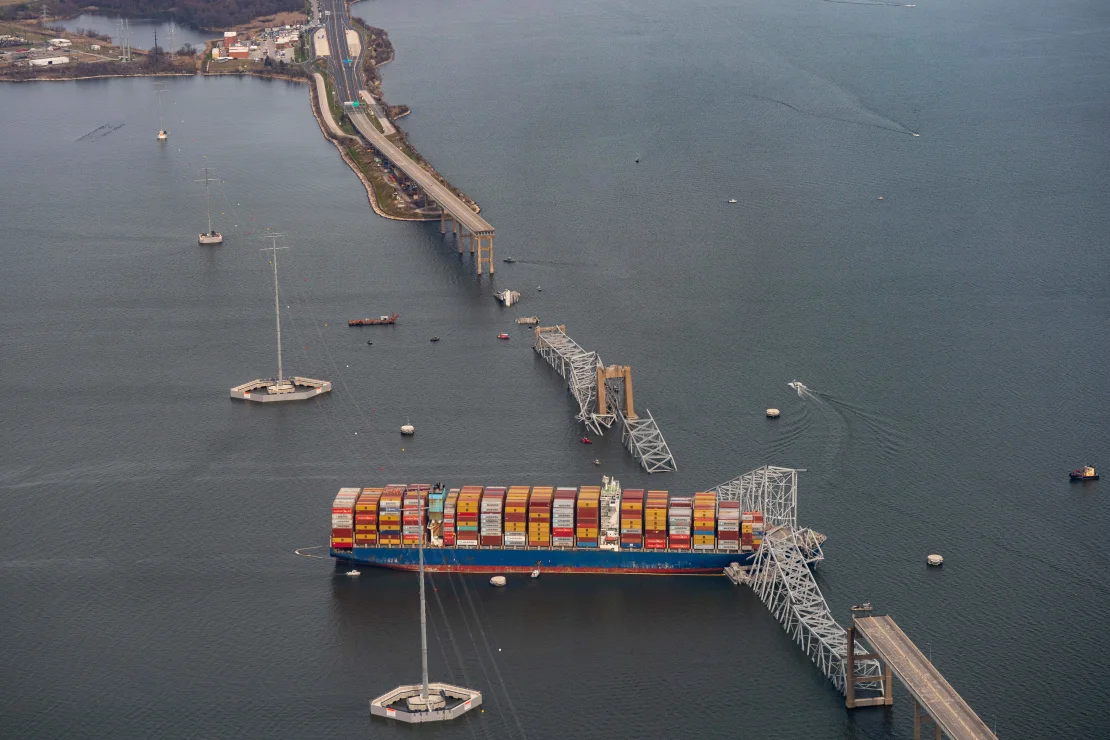(Photo courtesy of CNN) “The Dali ship after coming into collision with the Francis Scott Key Bridge.”
Duncan Cowie
Connector Editor
On Tuesday, March 26, the Francis Scott Key Bridge in Baltimore, Maryland was struck by a Singaporean cargo and completely broke down. The Dali, which is owned by Singaporean company Grace Ocean Ptd Ltd, lost power as it was arcing towards the Baltimore Bridge last week, crashing into it at near full speed and crumbling the bridge in seconds. The workers on the ship were able to send out a warning of the impending disaster minutes before impact. This allowed enough time for a complete stop of traffic onto the bridge, minimizing the number of people on the bridge at the time of the collapse, in which only one member of the ship’s crew was injured. Some construction workers who were filling in potholes on the bridge were not evacuated in time however, and at this point six of them are presumed dead.
Umass Lowell structural engineer Doctor Susan Faraji emphasized a lack of “redundancy” when it came to the bridge. The Baltimore Bridge was designed with accidental hits in mind, but never this massive force. No matter what the ship hit, it was going to barge through, but where Dr. Faraji believes they will change the bridge in the future is “more redundancy in the trusts and extra security around the piers.” The current superstructure of the bridge is spread across its entirety, so if one of the piers falls, it creates a sort of “domino effect”. A single pier being taken down and destroying the whole bridge is something that can be avoided and any future revisions on the rebuilding of the bridge will have those assumptions kept in mind.
Dr. Faraji is hopeful that this despairing event will be a catalyst for a safety committee around the monitoring of essential high-traffic bridges every few years to make sure they are both up to code and follow any new safety and durability developments that have happened since the bridges were first opened. She also believes that upgrades should be made to bridges based on new knowledge that has exposed flaws and led to better bridge designs. In addition to these upgrades, frequent inspections should be performed on the bridges that have heavy amounts of cars going over them every year.
The bridge was opened in 1977 after a 5-year building process and had been an essential bridge that carried around 11.5 million cars across it annually, especially as part of the drive between New York City and Washington D.C.. The bridge had been an important part of Baltimore and Maryland’s culture, a solid sense of what would always be in the world, signified by marriage proposals and sappy lines in television shows. The aftermath of the event marks a change in that idea of consistency and safety for Marylanders. President Joe Biden visited Baltimore to show support, promising to put forward great effort into the rebuilding of the bridge, saying he was “going to move heaven and earth to rebuild this bridge as rapidly as humanly possible.”




